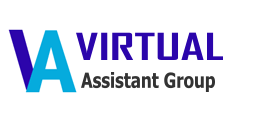Remote Leadership: Navigating the Art of Managing Virtual Assistant Teams Effectively
/in Virtual assistant in USA /by admin
The worldwide workforce is shifting significantly toward remote work arrangements, necessitating the necessity for remote leadership. Effectively managing virtual assistant teams is a critical component of modern corporate operations, as these talented employees play an increasingly important role in enterprises around the world. In this post, we’ll look at the art of remote leadership and give helpful tips for managing virtual assistant teams.
The Rise of Virtual Assistant Teams
Virtual assistants (VAs) have become integral to businesses across various industries, offering specialized skills, cost-efficiency, and flexibility. As organizations tap into this global talent pool, effective leadership becomes paramount to harness the full potential of virtual assistant teams.
Challenges of Remote Leadership
Leading virtual assistant teams presents unique challenges, including:
Geographical Separation: Team members may be scattered across different time zones and locations, making communication and collaboration more complex.
Communication Barriers: Remote communication relies heavily on digital tools, potentially leading to misinterpretation, misunderstandings, and a lack of non-verbal cues.
Cultural Differences: Virtual assistant teams may consist of individuals from diverse cultural backgrounds, necessitating cultural sensitivity and adaptability.
Motivation and Engagement: Remote workers may struggle with feelings of isolation and a lack of connection to the organization, affecting motivation and engagement.
Performance Monitoring: Supervising and evaluating the performance of virtual assistants can be challenging without physical presence.
Effective Remote Leadership Strategies
To manage virtual assistant teams effectively, consider these strategies:
Clear Communication: Establish transparent and frequent communication channels. Use video conferences, chat tools, and project management platforms to facilitate real-time interactions.
Set Clear Expectations: Define roles, responsibilities, and performance expectations from the outset. Ensure that virtual assistants have a clear understanding of their goals and objectives.
Cultural Sensitivity: Foster a culturally inclusive environment by recognizing and respecting cultural differences. Promote open dialogue to bridge any communication gaps.
Flexibility: Embrace flexibility in work hours and methods to accommodate different time zones and preferences, allowing virtual assistants to achieve work-life balance.
Regular Check-Ins: Schedule regular one-on-one and team meetings to maintain a sense of connection. Use these meetings to discuss progress, address challenges, and provide feedback.
Goal-Oriented Approach: Focus on outcomes and results rather than micromanaging daily tasks. Trust your virtual assistant team to deliver on their objectives.
Training and Development: Invest in ongoing training and skill development to help virtual assistants grow in their roles and stay motivated.
Feedback Loop: Establish a feedback-rich culture where both positive and constructive feedback is encouraged. This helps virtual assistants understand their strengths and areas for improvement.
Performance Metrics: Define key performance indicators (KPIs) and metrics to evaluate the effectiveness and productivity of your virtual assistant team.
Team Building: Create opportunities for virtual assistants to connect and build relationships through team-building activities, virtual coffee breaks, or online social events.
Data Security: Implement stringent data security measures to protect sensitive information handled by virtual assistant teams.
Remote leadership in managing virtual assistant teams requires a blend of effective communication, cultural sensitivity, flexibility, and trust. As the workforce continues to evolve toward remote and distributed models, honing your remote leadership skills becomes increasingly critical. By embracing these strategies and fostering a supportive and engaging work environment, you can harness the full potential of your virtual assistant teams, enhance productivity, and drive success in the digital age. Remote leadership is not just about overseeing tasks; it’s about empowering virtual assistants to thrive and contribute meaningfully to your organization’s objectives.
Learn more about how our services can transform your business. Book a consultation to discuss your unique need and goals, and how we ca ngrow your business. Contact us at 1-877-263-6150 or click here to know more
